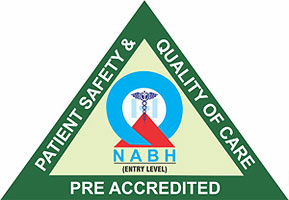+91-7291089674 (Bandra)
+91-7291092120 (Kandivali)




July 27, 2021 | Author: Admin
LASIK is Laser in-situ keratomileusis. It is one of the most popular vision correction surgery for people with vision problems such as myopia (nearsightedness), hyperopia (farsightedness) and astigmatism. It allows a person to be free from glasses and contact lenses.
LASIK has created a remarkable transition in ophthalmic and refractive surgery. LASIK provides quick recovery and with about 98% satisfactory results with 20/20 vision. The results of LASIK have become better and better with time as more advanced technologies have developed.
Femtosecond laser in LASIK surgery has revolutionized the procedure, offering precise results with ultimate safety without using a blade. Other advanced technologies offer the visual map creation of irregularities to provide customized and precise vision correction outcomes.
Lasik surgery practised for the treatment of vision problems such as:
It is the condition in which a person cannot see the objects placed at some particular distance. But can easily see the objects placed near to him. The light does not fall on the retina properly and gets focused in front of the retina and this makes the distance vision blurry.
In this condition the person can see far objects but near vision is blurry. The light gets focused behind the retina instead of on the retina and this makes the near vision blurry.
The condition is a combination of both nearsightedness and farsightedness. The person is not able to focus at near or distant vision as light gets focused at multiple points either in front or behind the retina.
Customized LASIK Treatment: It is considered a safe and effective future of LASIK without any postoperative complications. Customized LASIK treatment uses a computer called a wavefront device. The device is used to carry out an examination of the cornea and figure out how to improve the vision without compromising the shape of the cornea.
Microkeratome Technology: A microkeratome is a bladed instrument used to make a thin cut in the cornea and create a flap of the cornea. To impart the laser energy the flap is then lifted. The laser energy reshapes the eye for vision correction. The technology is referred to as microkeratome technology.
Femtosecond LASER: Femtosecond LASER is an alternative technology of microkeratome. It includes a high-energy laser instead of using a blade. It is often known as bladeless or all-laser LASIK.
Visual Supportive Technology: The new technology used to detect forme fruste keratoconus, the corneal surface irregularities and reduce the risk of post-LASIK ectasia. It maps the anterior and posterior surfaces of the cornea. The technology includes videokeratography, Placido-disc based topography and optical coherence tomography that provide comprehensive detail of patients’ suitability for LASIK.
Customized ablation uses wavefront technology to measure and treat optical imperfections in the human eye or cornea. A targeted beam of light is sent through the eye. The light beam emerges out of the eye s optical structures. A sensor captures and analyses it to detect any irregularities in the wavefront pattern of light. It creates a 3D visual map of the optical system and captures it in the computer system to create a customized treatment profile.
Intralase is blade-free laser technology. It replaces the traditional way of creating the corneal flap through the microkeratome. It decreases the majority of complications that arises due to the use of microkeratome.
When the eyes surface irregularity (corneal aberration) creates distortion of images, adaptive optics is used in ophthalmic surgery to correct the wavefront aberration of the human eye.
LASEK (laser epithelial keratomileusis) the surface of the cornea is removed with diluted alcohol. In this process, the laser reshapes the cornea and the surface of the cornea heals over few days at the same place.
Epi-LASIK is similar to LASEK but the surface of the cornea is lifted through a special equipment called epikeratome then allowing the laser to reshape the cornea.
Both the procedures are used to reshape the cornea thereby improving vision by allowing the light to focus on the retina.
Advancement in LASIK surgery is an ongoing process. A move from using the manual blade in surgery to bladeless lasers for flap cutting has reduced the complications and improved the accuracy. Choosing an eye surgeon and making up the decision to undergo surgery take a deep study regarding the benefits and risk of the surgery. You can take advice from a trusted eye care professional about surgery. You may also ask your doctor about the advancements in the surgery that might help you make the correct decision to undergo delicate eye surgery.